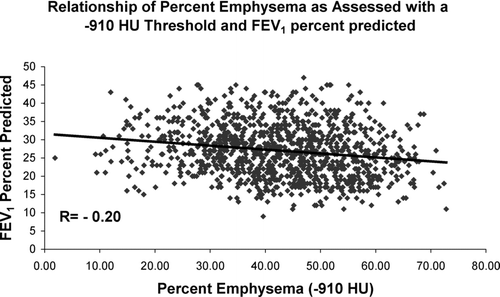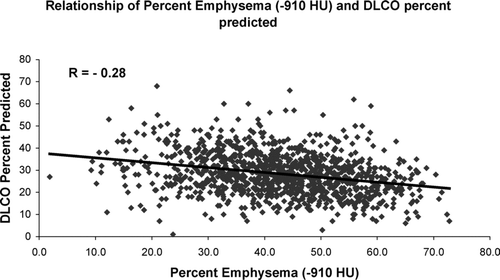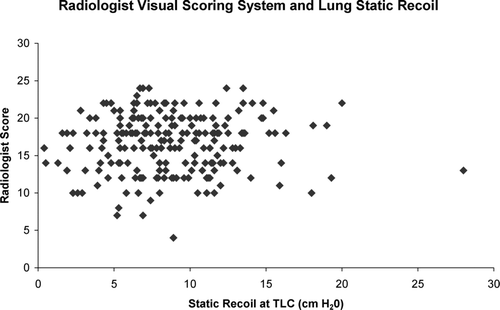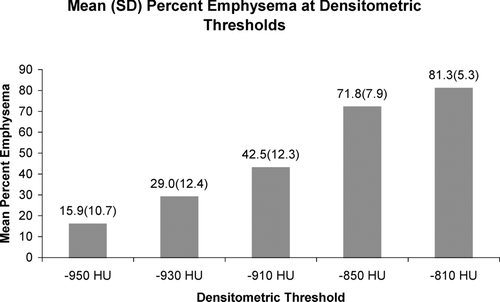Figures & data
Table 1 Characteristics of subjects including post rehabilitation, post bronchodilator pulmonary function measurements and corresponding pre rehabilitation CT scans (n = 1094 unless specified)
Figure 2 Relationship of FEV1 percent predicted and percent emphysema using a density threshold of −910 HU.

Figure 3 Relationship of DLCO percent predicted and percent emphysema using a density threshold of −910 HU.

Table 2. a Univariate correlations of measures of pulmonary function and percent emphysema as defined by a range of HU density mask thresholds
Table 2. b Univariate correlations of measures of lung function and the CT burden of emphysema as assessed by the radiologist visual score, and objective measures of mean lung density and the Hounsfield Unit threshold that defines the lowest 15% of lung field attenuation (perc15)
Figure 4 Relationship of lung static recoil as measured with an esophageal balloon and the Radiologist Visual Scoring System.

Table 3 Characteristics of subjects that had pulmonary function measurements, corresponding CT scans, and lung mechanics measurements at time of enrollment
